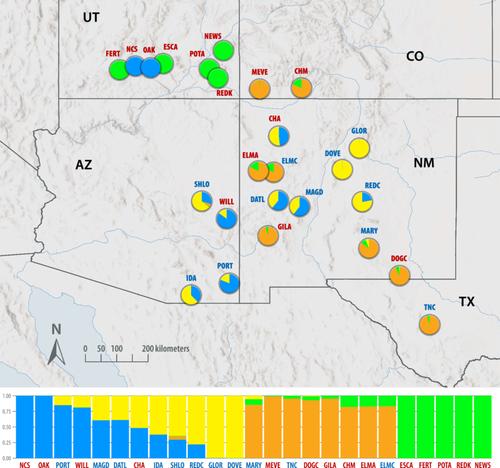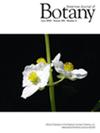Evidence for human-caused founder effect in populations of Solanum jamesii at archaeological sites: II. Genetic sequencing establishes ancient transport across the Southwest USA
Abstract
Premise
The domestication of wild plant species can begin with gathering and transport of propagules by Indigenous peoples. The effect on genomic composition, especially in clonal, self-incompatible perennials would be instantaneous and drastic with respect to new, anthropogenic populations subsequently established. Reductions in genetic diversity and mating capability would be symptomatic and the presence of unique alleles and genetic sequences would reveal the origins and ancestry of populations associated with archaeological sites. The current distribution of the Four Corners potato, Solanum jamesii Torr. in the Southwestern USA, may thus reflect the early stages of a domestication process that began with tuber transport.
Methods
Herein genetic sequencing (GBS) data are used to further examine the hypothesis of domestication in this culturally significant species by sampling 25 archaeological and non-archaeological populations.
Results
Archaeological populations from Utah, Colorado and northern Arizona have lower levels of polymorphic loci, unique alleles, and heterozygosity than non-archaeological populations from the Mogollon region of central Arizona and New Mexico. Principle components analysis, Fst values, and structure analysis revealed that genetic relationships among archaeological populations did not correspond to geographic proximity. Populations in Escalante, Utah were related to those on the Mogollon Rim (400 km south) and had multiple origins and significant disjunctions with those populations in Bears Ears, Chaco Canyon, and Mesa Verde sites.
Conclusions
Movement of tubers from the Mogollon region may have occurred many times and in multiple directions during the past, resulting in the complex genetic patterns seen in populations from across the Four Corners region.


 求助内容:
求助内容: 应助结果提醒方式:
应助结果提醒方式:


